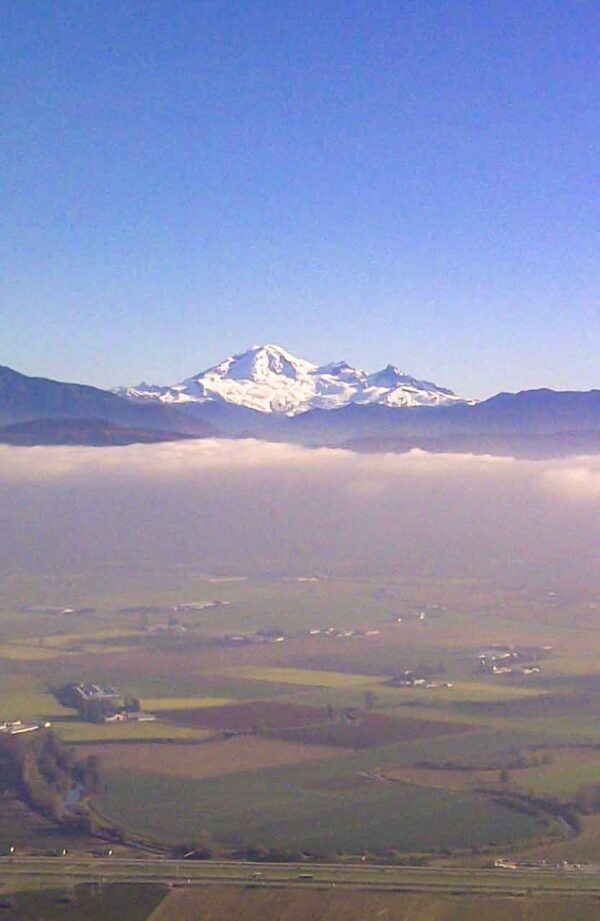Past Regional Work
Here are highlights of FBC’s past regional initiatives in the Fraser Valley.
 2021 clean-up. Photo: FVIDA
2021 clean-up. Photo: FVIDA
From 2016 to 2022 FBC provided secretariat support to the Fraser Valley Illegal Dumping Alliance (FVIDA), a coalition of environmental stewards, volunteer clean-up groups, guides, non-profit organizations and local government. Together their focus was on finding solutions to the issue of ongoing illegal dumping in Chilliwack, Mission and the Fraser Valley.
FVIDA sought to raise awareness and inspire behavioural change to curb illegal dumping. Its work included cleanup events, helpful signage, educational outreach and social media. FVIDA member groups hosted annual clean-up work bees that drew hundreds of volunteers and supporters. There were also smaller clean-ups in wilderness and remote areas to protect important fish-bearing streams, rivers and watershed habitats. FVIDA worked with and alerted Conservation Officers and enforcement groups about dangerous or harmful activities.
Member groups continue monitoring, pickups and promotion of responsible backwoods etiquette to leave no trace to sustain a healthy environment.
Let’s Clear the Air was a two-year (2016-2018) outreach program funded by Environment Canada EcoAction. The program encouraged Fraser Valley residents with woodburning stoves to upgrade to high efficiency models so as to reduce wood smoke and improve air quality.
This community outreach venture brought practical information to more than 500 woodstove users in the region about BC’s Wood Stove Exchange rebate program. It also raised awareness on the importance of using dry, seasoned wood and other best practices, through written materials and interactive outreach campaigns. For tips, see Chop, Stack, Burn.
FBC’s Fraser Valley office brought a wood burning expert to present at the fire hall and community events. FBC’s Northern Interior office has done similar educational work through its online Woodsmoke Info Portal.
 Young barn owls. Photo: Sofi Hindmarch
Young barn owls. Photo: Sofi Hindmarch
From 2014 to 2019, FBC’s Fraser Valley staff led a series of outreach and research projects to build a database on Western Barn Owls in the Fraser Valley, which is the northern range of this endangered species on the West Coast. One of 16 owl species in Canada, the Barn Owl is vulnerable to habitat loss and prey because of urban and road development, and poisoning from rodenticide used to kill grassland rodents.
The project was funded by Investment Agriculture Canada, the McLean Foundation and Art Knapp Nurseries.
Working with Ministry of Agriculture staff in Abbotsford, a BCIT vole researcher and other advisors, FBC and an owl specialist engaged farm owners in a nest box program. Custom-made barn owl nesting boxes were installed in their fields or outbuildings.
Owners were asked to forgo the use of pesticides to control Townsend’s voles and rats and to let the owls do their work. A nesting Barn Owl pair and their chicks eat 1,200 or more small rodents per year, no small feat! Farmers reported significantly reduced rat and vole problems after Barn Owls took up residence on their farms. Pesticide regulators and specialists provided advice and looked at the regulation of anticoagulant rodenticides. Owl numbers were surveyed and recorded with Birds Canada.
Some program highlights:
- More than three dozen farms were engaged, and more nest boxes were installed and occupied by breeding Barn Owl pairs
- The team developed information sheets in English and Punjabi geared primarily for blueberry farmers; these were distributed at farm field days, the Pacific Agriculture Show and other producer events
- The project produced three videos on best management practices for vole identification, field management, rodenticides, and encouragement of raptors as part of an integrated pest management plan. Watch the videos on the BC Blueberry Council website.
- The Barn Owl project was among three highlighted at the 2017 IAF AGM, while the bilingual owl/vole project was featured in the IAF 2017 Annual Report
- Articles on this project also ran in producer magazines and in Country Life in BC, May 2018 as “Vole Control in Blueberries”
- Pest consultants and stewardship groups used the videos as an educational tool
- Regulating agencies and interested producer groups continue to expand the adoption of sustainable practices for rodent control and barn owl use
 In partnership with the Fraser Valley Regional District and with funding from the federal Ministry of Environment’s EcoAction program, the FBC Fraser Valley staff developed a teacher resources package focused on air quality.
In partnership with the Fraser Valley Regional District and with funding from the federal Ministry of Environment’s EcoAction program, the FBC Fraser Valley staff developed a teacher resources package focused on air quality.
The lessons, designed for Grade 6 to 12 levels, were adapted from ©Clean Air Champions (2011-2012) to reflect the air quality data and conditions of the Fraser Valley. Educators could address personal and public health, climate change, biology, sociology and other topics, from a Fraser Valley perspective. With substantive input from an FVRD expert air quality technician, each lesson was designed to meet learning outcomes prescribed by the BC Ministry of Education for each subject and grade level.
Find the Clear Skies, Clean Air Teacher Resources package (2014-2016) on the Fraser Valley Regional District website.
A hazy view of Mt Baker from Fraser Valley. Photo: Steve Oldroyd
The BC Clean Air Research Fund was a multi-year provincial partnership program, administered by FBC, to fund groundbreaking air quality research. BC CLEAR provided funding from 2008 to 2016. Funded projects included those aimed at developing a greater understanding of air quality in the Fraser Valley.
In June 2014 the Fraser Basin Council convened a solutions dialogue under the banner of “Harmony on the Fraser” to discuss the upcoming salmon fishing season and its challenges.
2014 was a strong year for Fraser River sockeye. That meant fishing opportunities for all sectors, but also crowded fishing conditions in some areas, particularly in the busy stretch between Chilliwack and Hope.
Many new recreational anglers come to the Fraser each year, but especially when sockeye runs are strong, and some anglers are not familiar with the rules. As a result, some do not understand that both Aboriginal and recreational fisheries may be active on the river at the same time. In the past, there have been concerns about unsafe parking, unsafe highway or rail crossings, trespassing, garbage dumping, poor sanitation and lack of courtesy among the people fishing, whether on boat or shore.
These and other issues were discussed in the Harmony on the Fraser dialogue, which had a good turnout from First Nations, sport fishing organizations, conservation interests and enforcement agencies. Everyone agreed on the importance of encouraging safe and respectful relations along the river. The dialogue was helpful in identifying actions that participants could take to address problems in their own areas of responsibility, now and in future years.
The Fraser River Fisheries Peacemakers were active in this work. The Peacemakers were volunteers who came together from within First Nations and recreational fishing organizations to educate about good river manners. They encouraged better relationships between First Nations and recreational fishers, and they worked to prevent and resolve conflicts. Their work began in 2009 after a confrontation between two recreational fishers and a First Nations Chief on the Fraser River, during which the Chief was shot in the face with a pellet gun. In the minds of all responsible people, this violent incident brought into sharp focus the need for everyone to share the river in a more peaceful manner.
The Fraser Basin Council also helped support their educational outreach, leading to a “Harmony on the Fraser” public event in August 2014 at Island 22 in Chilliwack.
Respectful dialogue is key to good working relationships.
Community to Community (C2C) Forums, hosted by local governments and First Nations, with support from the Union of BC Municipalities and First Nations Summit, are a good example. The C2C forums began in 1997 and have since opened the door to more supportive, neighbourly relationships between Aboriginal and Non-Aboriginal leaders, and opportunities to work together.
The Fraser Basin Council has facilitated a number of C2C forums throughout BC, including in the Fraser Valley.
For more information on the UBCM Community to Community Forums, visit the UBCM website.
 Fraser River Debris Trap. Photo: Denise Palmer Hoskins, FBC
Fraser River Debris Trap. Photo: Denise Palmer Hoskins, FBC
The Fraser River debris trap is a floating facility between Hope and Agassiz that corrals uprooted trees and wood debris into a side channel where they can be chipped for hog fuel. The trap helps protect Lower Fraser River communities from large volumes of wood debris coming downstream during spring high waters and avoids what was estimated (in 2008) at $8 million a year in costs of clean-up and repairs.
FBC worked with a multi-party committee for over a decade to oversee the Fraser River Debris Trap and to secure annual funding commitments for its operation, primarily from federal and provincial authorities. The Province of BC and Port Metro Vancouver made a long-term commitment to fund and operate the trap, beginning April 2011.



